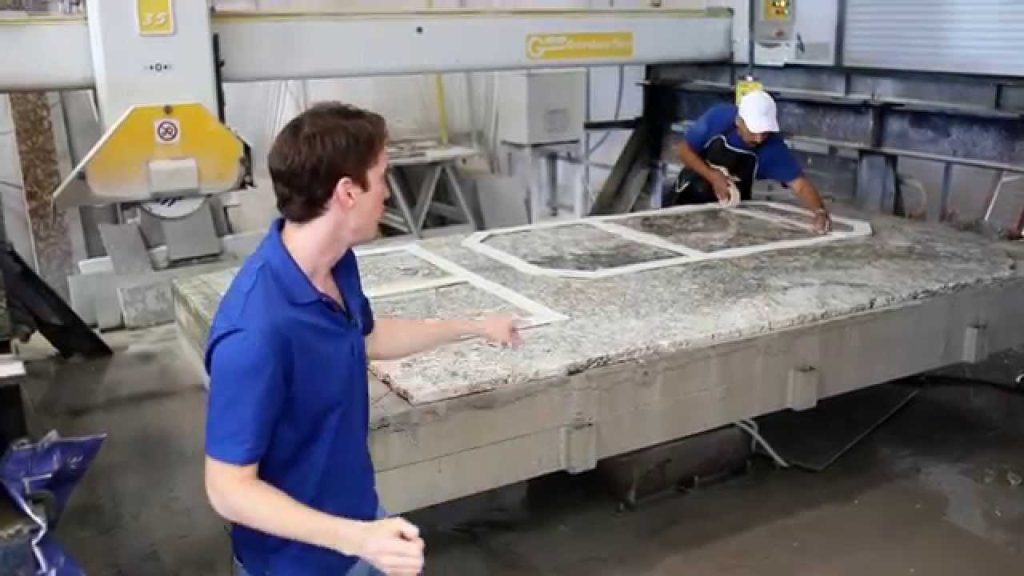Granite fabrication is a meticulous process that turns raw granite blocks into beautifully crafted countertops, tiles, and other decorative or functional pieces. The process begins with quarrying, where large granite blocks are extracted from quarries. These blocks are typically quite massive and need to be transported to fabrication facilities where they are prepared for cutting and shaping. Once the granite blocks reach the facility, they are inspected for quality. Fabricators check the block for any imperfections such as cracks, discolorations, or faults that could affect the final product. After passing inspection, the granite is carefully measured and marked with a layout plan for cutting. This step is crucial because it ensures that the slabs are cut in a way that maximizes the aesthetic appeal of the stone, such as aligning the grain pattern or selecting areas with unique veining to enhance the look of the finished product. The next step involves cutting the granite into slabs using large, powerful saws, often equipped with diamond blades to handle the hardness of the stone.

The saws slice the granite into thinner sheets, which can range from about 2 to 3 cm in thickness, depending on the intended use. After cutting, the slabs are polished using specialized polishing machines. These machines use abrasives to smooth the surface of the granite, enhancing its natural shine and revealing the intricate patterns and colors within the stone. Once polished, the slabs are carefully inspected again. This is the final opportunity to catch any issues that may have developed during the cutting and polishing stages. If everything meets the required standards, the slabs are then ready for the next phase, which is shaping and edging. Shaping involves cutting the granite into specific sizes and shapes according to the design plans, whether it is for countertops, sinks, or other custom installations. Edging is another essential part of the process, where the edges of the granite are polished and shaped to give them a finished look. Different edge profiles are available, from simple straight cuts to more elaborate designs like bullnose or ogee.
Once the pieces are shaped and edged, they are ready for installation visit https://theenterpriseworld.com/granite-fabrication-issues/. The installation team will transport the slabs to the client’s location, where they are carefully placed and secured. Depending on the design, additional steps such as adding sink cutouts or drilling holes for faucets might be necessary. This is done with specialized tools designed to ensure precision. The final step is sealing the granite to protect it from stains and enhance its durability. Sealing helps preserve the natural beauty of the stone while making it easier to maintain. Granite fabrication requires a high level of skill, precision, and attention to detail. Each step in the process is essential to achieving the high-quality finished product that granite is known for. From the initial quarrying to the final installation, it is a process that combines art and science, showcasing the natural beauty and timeless appeal of granite.
